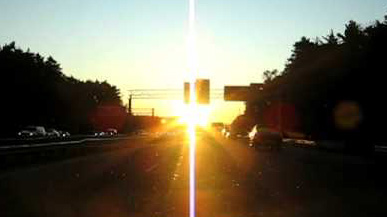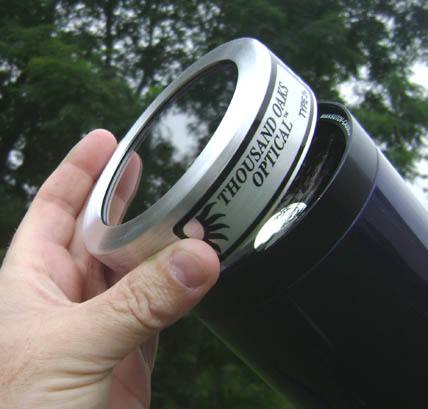ISO Certification for Eclipse Glasses
Why it’s so important to have CERTIFIED eclipse glasses!
If you’ve read our piece on what it is about looking at the Sun that hurts your eyes, you can see that it’s dangerous!
We all have this almost instinctive thing we do whenever the Sun accidentally gets into our field of vision – we squint, we close our eyes, we turn our heads away almost immediately,
because the Sun is just too bright to look at.

When we’re driving into a sunrise or sunset, and the Sun is just exactly at the wrong place, we have to get creative with the visor in our car, to put it where it will block the Sun and allow us to still safely see the road, or that red light as we wait for it to change. We don’t want that bright Sun in our eyes!
Normally, this is all the protection we need, to make sure our eyes stay safe – we just simply DON’T look at the Sun!
So now that there’s a total eclipse of the Sun going on, and we want to look at it because we’ve heard it’s really cool, our natural instincts get in the way. This time, we WANT to look at the Sun, and some people actually do it anyway – and hurt their eyes. (We have to tell you again, DON’T LOOK at the Sun without proper eye protection!)
Other people try to use something to block the Sun’s rays that won’t be good enough, and they run the risk of seriously injuring their eyes. We won’t list all the things people try to use, because we don’t want you doing that, either.
But veteran eclipse chasers and astronomers DO look at the Sun during eclipses, using special solar filters that block out enough of the bad UV rays and the really bright light. They don’t hurt their eyes, and they enjoy the eclipse. What’s their secret? They’re using equipment and procedures that are designed for the job they’re trying to do.
There are many people who do lots of things that are potentially dangerous, like…flying, mountain climbing, scuba diving, car racing, hang gliding, sailing across the ocean, exploring a cave, bungee jumping, practicing archery, going to work as an electrician, or a roofer, carpenter, mechanic, firefighter, window washer, astronaut, sheetmetal worker… SO MANY THINGS that people do all the time are absolutely dangerous - but people do them every day, safely, because they use the right equipment, and they use it correctly.
There are indeed filters that are specially designed to put in front of your eyes and look through,
that will cut down on all the dangerous rays of the Sun enough to allow you to look at it without hurting your eyes:

Some filters are very expensive, and are used on telescopes and cameras so that even the magnified rays of the Sun won’t be harmful. These are too expensive for normal, everyday people to buy just for one eclipse.
But then, there are other filters that are not very expensive at all, and they work just as well for the short period of time that people are going to want to look at the Sun while it’s being eclipsed. The simplest ones are called Eclipse Glasses! These are available all the time, if you want to use them to go outside and look at the Sun when there’s nothing going on – but that’s kind of boring.
When an eclipse comes around, EVERYBODY wants to get eclipse glasses, so they can take part in the event. And as with all equipment that’s used to make sure you stay safe while doing something that could be dangerous, there have to be stadards that are followed in design, manufacture, storage, shipping, and use to make sure the eclipse glasses you want to use are going to work.
The ISO (International Standards Organization) is a worldwide organization that publishes these detailed standrds on literally everything you can think of. Some standards have been around for a long time, and others are being created every year. The standards exist to protect the public from using devices or methods that are flawed, damaged, not well-designed, or that just plain don’t work. They are written by leading experts, confirmed by other leading experts, and then tested again and again to make sure that if products follow every detail of the standard, they will be safe to use.
In 2015, the ISO came out with a standard for solar viewing material, called “ISO 12312-2”. It was written by Dr. Ralph Chou, who is one of the world’s leading experts on eye safety during eclipses – because he himself is an eclipse chaser AND a professor of optometry. This standard is incredibly detailed, and defines all the scientific details about how much of each type of light the filters have to follow in order to be OK per the standard.
The standard had been reviewed for years for accuracy, and finally was approved for use in 2015. All reputable manufacturers of eclipse glasses and the filter material itself make (and were already making) the filters they use in their eclipse glasses to follow this standard. So, if you use glasses made by these vendors, and use them correctly, you will be fine.
The American Astronomical Society has a great page that explains everything about eclipse glasses and eye safety as well. Make sure you read it, too; you can’t get more authoritative than the AAS!
But there’s more, unfortunately. Because the demand for eclipse glasses was so great, some companies out there have made eclipse glasses that don’t conform to the standard, but they are putting the ISO logo on the glasses anyway. This is very bad, because people won’t really know if their glasses are ISO certified just by looking at them. That’s why it’s so important to buy glasses directly from the manufacturers themselves, or from reputable outlets that once again are listed by organizations like the AAS and NASA. If you buy from these people, you absolutely can’t go wrong.
Eclipse2024.org is proud to be noted by these organizations as a reputable supplier of eclipse glasses. We work directly with the manufacturers of certified, USA-made eclipse glasses, and we stock and sell ONLY glasses that are made by these compaines. We are in business to bring you the best information about the eclipse, and there’s no reason in the world to risk everyone’s eyes by offering a product that doesn’t meet the standard!
VERY IMPORTANT NOTE: One of the requirements of the ISO standard is that the name of the manufacturer be printed on the glasses themselves. If the glasses you are being provided do not show a manufacturer's name, then they are not in compliance with the standard. They may be OK to use, or they may not be. But if the manufacturer isn't shown on the glasses, then you know immediately they are not in compliance with the standard. In this case, you should ask who made them. If the answer to that question is not immediately forthcoming, then that will tell you something very important. You can be sure that Eclipse2024.org will always be happy to tell you exactly who made the eclipse glasses you got from us!
So make sure you get your eclipse glasses from a reputable vendor. You can buy them here on Eclipse2024.org, or from anyone on the approved vendors listing. Once you have them, then you can relax and learn more about enjoying and watching the eclipse – SAFELY!


